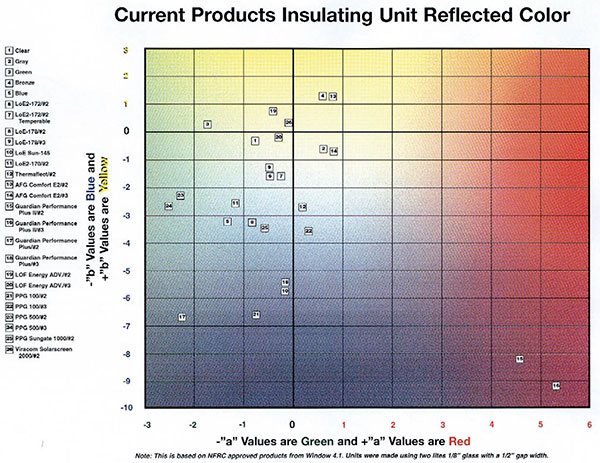Not all low-e glass is created equal with regard to color filtering. Some low-e glass is remarkably close to #1-clear glass. Others filter out substantial portions of red and/or blue light, creating color distortion of transmitted. The lesson learned here is similar to the one manufacturers of compact fluorescent lights (CFLs) have learned: high performance is not just about energy—it’s about achieving energy savings without sacrificing other aspects of performance, such as color rendering.
In working on the Dallas Building America Zero Energy home with master builder, Jim Sargent1, Building America team leader Building Science Corporation (BSC), was completely flabbergasted when Jim said, "I may have a problem with low-e windows."
What, no high performance low-e windows? But why? "It's not their energy performance—it's their color rendering, at least for the ones I have used," Jim stated. "They cast a bluish tinge on the walls that buyers have noticed and don't necessarily like. Do all low-e windows do this?"
Frankly, BSC had no idea. But we knew where to turn—BSC Building America partner, Cardinal Glass. Cardinal Glass responded with the color chart shown below.

The chart shows colors that are filtered out by different types of glass--#1 is clear glass and is located in the nearly white portion of the chart. This makes sense—clear glass filters out very little in the visible spectrum. The farther you move from this area of the chart, the more that one (or more) of the primary colors is being filtered.
Clearly (pardon the pun), not all low-e glass is created equal with regard to color filtering. Some low-e glass is remarkably close to #1-clear glass. Others filter out substantial portions of red and/or blue light, creating the color distortion of transmitted light that Jim Sargent and his customers were noticing with low-e windows.
The lesson learned here is similar to the one manufacturers of compact fluorescent lights (CFLs) have learned: high performance is not just about energy—it’s about achieving energy savings without sacrificing other aspects of performance, such as color rendering. The Building America approach is based on systems thinking—every thing is connected to everything. That approach must be used for the technical as well as the non-technical aspects of performance for success in the marketplace. Science sells, so long as we get the whole “picture.” In this case, the whole picture means that Jim Sargent is singing some sort of Building America anthem rather than the “low-e blues.”
Download complete report here.
Footnote:
